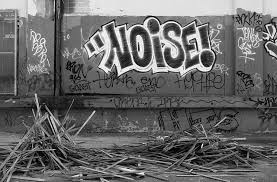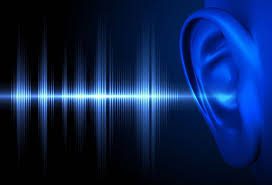Sound, a normal feature of our life, is the means of communication and entertainment in most animals, including human beings. It is also a very effective alarm system. A low sound is pleasant whereas a loud sound is unpleasant and is commonly referred to as noise‘. Noise can be defined as an unpleasant and unwanted sound.
Noise has always been an important environmental problem for man. In ancient Rome, rules existed as to the noise emitted from the ironed wheels of wagons which battered the stones on the pavement, causing disruption of sleep and annoyance to the Romans.
In Medieval Europe, horse carriages and horse-back riding were not allowed during night time in certain cities to ensure a peaceful sleep for the inhabitants. However, the noise problems of the past are incomparable with those of modern society.
An immense number of cars regularly cross our cities and the countryside. There are heavily laden lorries with diesel engines, badly silenced both for engine and exhaust noise, in cities and on highways day and night.
Aircraft and trains add to the environmental noise scenario. In industry, machinery emits high noise levels and amusement centres and pleasure vehicles distract leisure time relaxation.
What is Noise?
Community noise (also called environmental noise, residential noise or domestic noise) is defined as noise emitted from all sources, except noise at the industrial workplace. Main sources of community noise include road, rail and air traffic, industries, construction and public work, and the neighbourhood.
Read Also : Negative Health Effects of Noise
Typical neighbourhood noise comes from premises and installations related to the catering trade (restaurant, cafeterias, discotheques, etc.); from live or recorded music; from sporting events including motor sports; from playgrounds and car parks; and from domestic animals such as barking dogs.
The main indoor sources are ventilation systems, office machines, home appliances and neighbours. Although many countries have regulations on community noise from road, rail and air traffic, and from construction and industrial plants, few have regulations on neighbourhood noise.
This is probably due to the lack of methods to define and measure it, and to the difficulty of controlling it. In developed countries, too, monitoring of compliance with, and enforcement of, noise regulations are weak for lower levels of urban noise that correspond to occupationally controlled levels (>85 dB LAeq,8h; Frank 1998).
The extent of the community noise problem is large. In the European Union about 40% of the population is exposed to road traffic noise with an equivalent sound pressure level exceeding 55 dBA daytime; and 20% is exposed to levels exceeding 65 dBA (Lambert and Vallet 1994).
When all transportation noise is considered, about half of all European Union citizens live in zones that do not ensure acoustical comfort to residents.
At night, it is estimated that more than 30% is exposed to equivalent sound pressure levels exceeding 55 dBA, which are disturbing to sleep.
The noise pollution problem is also severe in the cities of developing countries and is caused mainly by traffic.
Population growth, urbanization and to a large extent technological development are the main driving forces, and future enlargements of highway systems, international airports and railway systems will only increase the noise problem.
Viewed globally, the growth in urban environmental noise pollution is unsustainable, because it involves not simply the direct and cumulative adverse effects on health. It also adversely affects future generations by degrading residential, social and learning environments, with corresponding economic losses (Berglund 1998).
Thus, noise is not simply a local problem, but a global issue that affects everyone (Lang 1999; Sandberg 1999) and calls for precautionary action in any environmental planning situation.
Sound and Noise
Physically, there is no distinction between sound and noise: sound is a sensory perception evoked by physiological processes in the auditory brain. The complex pattern of sound waves is perceptually classified as ―Gestalts and are labeled as noise, music, speech, etc.
Consequently, it is not possible to define noise exclusively on the basis of the physical parameters of sound. Instead, it is common practice to define noise simply as unwanted sound. However, in some situations noise may adversely affect health in the form of acoustical energy.
Sources of Noise
This section describes various sources of noise that can affect a community. Namely, noise from industry, transportation, and from residential and leisure areas.
It should be noted that equal values of LAeq, T (LAeq is the A-weighted, equivalent continuous sound level in decibels measured over a stated period of time, LAeq,T where T is the measurement time.

Most community and industrial noise measurements are A-weighted so the LAeq descriptor is widely used) for different sources do not always imply the same expected effect.
Industrial noise
Mechanized industry creates serious noise problems. It is responsible for intense noise indoors as well as outdoors. This noise is due to machinery of all kinds and often increases with the power of the machines. Sound generation mechanisms of machinery are reasonably well understood.
The noise may contain predominantly low or high frequencies, tonal components, be impulsive or have unpleasant and disruptive temporal sound patterns.
Rotating and reciprocating machines generate sound that includes tonal components; and air-moving equipment tends also to generate noise with a wide frequency range.
The high sound pressure levels are caused by components or gas flows that move at high speed (for example, fans, steam pressure relief valves), or by operations involving mechanical impacts (for example, stamping, riveting, road breaking). Machinery should preferably be silenced at the source.
Noise from fixed installations, such as factories or construction sites, heat pumps and ventilation systems on roofs, typically affect nearby communities.
Reductions may be achieved by encouraging quieter equipment or by zoning of land into industrial and residential areas.
Requirements for passive (sound insulating enclosures) and active noise control, or restriction of operation time, may also be effective.
Transportation noise
Transportation noise is the main source of environmental noise pollution, including road traffic, rail traffic and air traffic. As a general rule, larger and heavier vehicles emit more noise than smaller and lighter vehicles.
Exceptions would include: helicopters and 2- and 3-wheeled road vehicles. The noise of road vehicles is mainly generated from the engine and from frictional contact between the vehicle and the ground and air. In general, road-contact noise exceeds engine noise at speeds higher than 60 km/h.
The physical principle responsible for generating noise from tire-road contact is less well understood. The sound pressure level from traffic can be predicted from the traffic flow rate, the speed of the vehicles, the proportion of heavy vehicles, and the nature of the road surface.
Special problems can arise in areas where the traffic movements involve a change in engine speed and power, such as at traffic lights, hills, and intersecting roads; or where topography, meteorological conditions and low background levels are unfavourable (for example, mountain areas).
Railway noise depends primarily on the speed of the train, but variations are present depending upon the type of engine, wagons, and rails and their foundations, as well as the roughness of wheels and rails.
Small radius curves in the track, such as may occur for urban trains, can lead to very high levels of high-frequency sound referred to as wheel squeal. Noise can be generated in stations because of running engines, whistles and loudspeakers, and in marshaling yards because of shunting operations.
The introduction of high-speed trains has created special noise problems with sudden, but not impulsive, rises in noise.
At speeds greater than 250 km/h, the proportion of high-frequency sound energy increases and the sound can be perceived as similar to that of overflying jet aircraft.
Special problems can arise in areas close to tunnels, in valleys or in areas where the ground conditions help generate vibrations. The long-distance propagation of noise from high-speed trains will constitute a problem in the future if otherwise environment-friendly railway systems are expanded.
Aircraft operations generate substantial noise in the vicinity of both commercial and military airports. Aircraft takeoffs are known to produce intense noise, including vibration and rattle. The landings produce substantial noise in long low-altitude flight corridors.
The noise is produced by the landing gear and automatic power regulation, and also when reverse thrust is applied, all for safety reasons. In general, larger and heavier aircraft produce more noise than lighter aircraft.
Construction noise and building services noise
Building construction and excavation work can cause considerable noise emissions. A variety of sounds come from cranes, cement mixers, welding, hammering, boring and other work processes.
Construction equipment is often poorly silenced and maintained, and building operations are sometimes carried out without considering the environmental noise consequences.
Street services such as garbage disposal and street cleaning can also cause considerable disturbance if carried out at sensitive times of day.
Ventilation and air conditioning plants and ducts, heat pumps, plumbing systems, and lifts (elevators), for example, can compromise the internal acoustical environment and upset nearby residents.
Domestic noise and noise from leisure activities
In residential areas, noise may stem from mechanical devices (e.g. heat pumps, ventilation systems and traffic), as well as voices, music and other kinds of sounds generated by neighbours (e.g. lawn movers, vacuum cleaners and other household equipment, music reproduction and noisy parties). Aberrant social behavior is a well-recognized noise problem in multifamily dwellings, as well as at sites for entertainment (e.g. sports and music events). Due to predominantly low-frequency components, noise from ventilation systems in residential buildings may also cause considerable concern even at low and moderate sound pressure levels.
The use of powered machines in leisure activities is increasing. For example, motor racing, off- road vehicles, motorboats, water skiing, snowmobiles etc., and these contribute significantly to loud noises in previously quiet areas.
Read Also : Casella Waste Services Complete Guide
Shooting activities not only have considerable potential for disturbing nearby residents, but can also damage the hearing of those taking part. Even tennis playing, church bell ringing and other religious activities can lead to noise complaints.
Some types of indoor concerts and discotheques can produce extremely high sound pressure levels. Associated noise problems outdoors result from customers arriving and leaving. Outdoor concerts, fireworks and various types of festivals can also produce intense noise.
The general problem of access to festivals and leisure activity sites often adds to road traffic noise problems. Severe hearing impairment may also arise from intense sound produced as music in headphones or from children‘s toys.
In summary, aircraft operations generate substantial noise in the vicinity of both commercial and military airports. Building construction and excavation work can cause considerable noise emissions.
Transportation noise is the main source of environmental noise pollution, including road traffic, rail traffic and air traffic.
Physically, there is no distinction between sound and noise: sound is a sensory perception evoked by physiological processes in the auditory brain. It is common practice to define noise simply as unwanted sound.
In residential areas, noise may stem from mechanical devices (e.g. heat pumps, ventilation systems and traffic), as well as voices, music and other kinds of sounds generated by neighbors (e.g. lawn movers, vacuum cleaners and other household equipment, music reproduction and noisy parties).

